- Administrator
- Albums and Singles
 As fitting a split as could be, this album joins two of rock's most experimental experimentalists in a meeting of minds that, as any split should do, provides new insights into the output of both artists, creating a fitting relationship between these two diverging takes on weird.
As fitting a split as could be, this album joins two of rock's most experimental experimentalists in a meeting of minds that, as any split should do, provides new insights into the output of both artists, creating a fitting relationship between these two diverging takes on weird.
The disc opens with Volcano the Bear's five tracks, whose sumptuously layered take is, comparitevely at least, the more palattible of the two. Not that that means much here. "Our Number of Wolves" drifts from concrete scratch to ultra-slow New Orleans funeral music as covered by European avant-improvisers, while "The Boy with the Lips Inside" presents a spare beat and odd hummed melodies that trickle outward like some hi-fidelity field recording from hillsides yet uncovered, never presenting too much or getting carried away.
This comfort working with a single idea can be seen throughout here, as the extended "The Open, the Closed" presents sputtering synth lines and odd feedback that grows, shrinks, and grows again over its eight elliptical minutes. It is a compelling and, as is typical for the group, exceptionally well paced sonic descent before "Death Sleeps in the Ear" and the cosmically titled "The First Circle is the Eye" see the group moving deeper into the abyss.
La STPO, a relatively large ensemble of like-minded musical players (and I mean that in both senses) takes over from here, displaying their knack for oddly orchestrated mini-symphonies on tracks like "Guayaki," which could just as well be a meeting between gamelan classicists and early Zorn game pieces, and "Les Oreilles Internationales," whose silly and sputtering stop-starts, overrun with vocal antics, lunges deeply out of sync with any conventional genre trappings.
"Invalid Islands," opening with bent reed and string slides, eventually drifts into a kind of ether-drenched poetry before turning around and harkening toward a downtown aesthetic that's as much Pere Ubu as it is Branca, let alone Material. The closing "Colonies" is just as chaotic, jumping between sytles and approaches at a moment's notice while remaining entirely together and cohesive.
Given the strength of the music here, and the vast potential of such a tag-team as this, it seems a shame almost that the split wasn't done track by track. Given the world music influences, open sonic stances and moment's notice phrase changes of both groups, it seems like, rather than splitting the disc down the middle, this offering could just as easily alternate every other track. While the relationship of both groups is highly apparent here, perhaps there would be even more to discuss were they presented side by side and title by title. That said, this works too.
samples:
Read More
- Administrator
- Albums and Singles
 This mail order only edition of Steven Stapleton and Andrew Liles’ The Surveillance Lounge is superb. In addition, there are two extra CDs of drastically different versions of the album. Creaking and groaning their way across an audio backdrop that brings to mind the boggling landscapes of Yves Tanguy, the three discs cover the same unnerving mental states as classic Nurse With Wound albums like Homotopy to Marie and Insect and Individual Silenced. It is the first Nurse release since Salt Marie Celeste that has spooked me in any significant way and it is a welcome return to weirder moods after the lighter side of Nurse With Wound that has been explored with their recent live and studio output.
This mail order only edition of Steven Stapleton and Andrew Liles’ The Surveillance Lounge is superb. In addition, there are two extra CDs of drastically different versions of the album. Creaking and groaning their way across an audio backdrop that brings to mind the boggling landscapes of Yves Tanguy, the three discs cover the same unnerving mental states as classic Nurse With Wound albums like Homotopy to Marie and Insect and Individual Silenced. It is the first Nurse release since Salt Marie Celeste that has spooked me in any significant way and it is a welcome return to weirder moods after the lighter side of Nurse With Wound that has been explored with their recent live and studio output.
With a title like The Surveillance Lounge, this might suggest that the (un)easy listening style employed on Huffin’ Rag Blues has persisted but that is not the case. When elements of easy listening music do appear, it throws a sinister normality amidst the even more sinister strangeness. On "Yon Assassin is my Equal," the introducion of a relatively inoffensive lounge rhythm puts me on edge; Stapleton and Liles combine the annoyance of being stuck in a waiting room with an existentialist anxiety. Claustrophobic and paranoid, the music and incidental sounds haunt the listener, creating the sweaty discomfort of a bad dream. The nightmare continues with “The Golden Age of Telekinesis” where there is a fabulous, violent midsection featuring a demonic auctioneer that suddenly cracks open into a quiet, disorientating abyss.
Elsewhere, disembodied voices speak in French and German, bringing to mind the regrettably underexplored Echo Poème Sequence releases. In these moments, the unearthly beauty of Stapleton's audio surrealism come to the fore. Yet no matter how wonderful parts of The Surveillance Lounge get, the dripping dread is never far away. Stapleton and Liles conjure up an surreality where the sublime is dangerous and the benign is unfamiliar and threatening. The whole experience recaptures that early obsession with Le Comte de Lautréamont’s Maldoror and the darker moments of that novel are mirrored in the viscous quicksilver of “Close to You.”
The other two discs in The Memory Surface are dedicated to earlier versions of The Surveillance Lounge. The album started off as a soundtrack to F.W. Murnau’s Der Brennende Acker before evolving into the album described above. The soundtrack version of the album is a different beast altogether, the vast majority of the music bathed in vinyl surface noise like a fog obscuring a landscape. The effect is reminiscent of Philip Jeck’s work, crusty old records being given a new life in an unintended way. It is impossible to tell how much (if any) of the material is vinyl-sourced but the alien nature of the sounds suggests that whatever sources were utilised have been completely shorn of their original contexts. Elements are recognizable from The Surveillance Lounge but there is a large difference between it and the music created for Murnau’s film.
Also included are early mixes of “The Golden Age of Telekinesis” and “Yon Assassin is my Equal,” which are familiar sounding but still a far cry from the finished versions. They are different enough to warrant their inclusion but overall they lack the intensity of the The Surveillance Lounge versions and the atmospheric allure of the older Murnau soundtrack versions. However, from a phylogenetic standpoint they allow a glimpse into the fossil record (as it were) and provide the missing link between the soundtrack and the album.
The Memory Surface is well worth buying over the standard version of the album. While a lot of Nurse With Wound special editions are aimed at the hardcore fan, this is one instance where the special edition trumps the standard version hands down. What Second Pirate Session did for Rock’n Roll Station, The Memory Surface does for The Surveillance Lounge.
samples:
Read More
- Administrator
- Albums and Singles
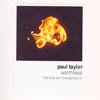 For those who have found the more recent work of Sutcliffe Jugend and Kevin Tomkins to be too soft or restrained, the other member of SJ has put together a solo disc that’ll satisfy the need for angry and harsh power electronics. While there is a lot in common with the mid/late 1990s Sutcliffe Jugend, there is a bit more room for innovation, and even some tracks that work in rhythms and sounds more inspired by early electronic music rather than serial murder.
For those who have found the more recent work of Sutcliffe Jugend and Kevin Tomkins to be too soft or restrained, the other member of SJ has put together a solo disc that’ll satisfy the need for angry and harsh power electronics. While there is a lot in common with the mid/late 1990s Sutcliffe Jugend, there is a bit more room for innovation, and even some tracks that work in rhythms and sounds more inspired by early electronic music rather than serial murder.
Technically, Worthless is the sequel to the first Misogynist album, Songs for Women, that was released without the artist’s permission in the late 1990s. Having not heard that disc, I’m not able to compare this work to that earlier one, but regardless of that, it stands strongly on its own. The opening “Act 1” sets the stage for what will follow: a normally disparate combination of low end noise buzz and squelchy tones met with almost string-like sustained passages, contrasting both an overly dynamic bed of noise with almost ambient and dramatic swells as well.
While it never reaches the manic fury that Sutcliffe Jugend’s two albums on Cold Meat Industries did, "Act 2" and the longer, closing "Act 11" border on that territory. The former is based on stammering and stuttering digital noises and sharp, razor like transitions between textures, while the latter is a slow building pile of traditional "harsh noise," layering on top of itself until it reaches the inevitable climax of feedback and roar. Also, both of these pieces feature vocals: the former is more of a spoken word piece between Taylor and Gaya Donadio, where both deliver their parts in an extremely detached, mechanical cadence, while the latter is Taylor alone, screaming through murky layers of effects.
Between these more traditional tracks is where the more notable shifts occur. "Act 4" opens with disturbingly conventional electronic rhythms and synth works that could be any electronic or techno project, except the slow overtaking by punishing feedback and screeching elements that take it far away from normalcy. "Act 9" features similar electronic rhythms, but far less conventional and much more harsh, placing it more in a modernized early industrial vibe.
Other pieces are far more low key and subtle: the chimes, guitar, and delayed xylophone like notes over time stretched tones on "Act 7" feel more Asmus Tietchens than Anenzephalia, and the opening of Act 10 allows some of Taylor’s untreated gentle guitar work to be the focus, even though that later transitions to full on brutality by the middle point of the piece. Both "Act 3" and "Act 5" maintain the traditional power electronic menace, but in a slow and calm manner that is much more menacing than overtly aggressive.
Paul Taylor’s first proper solo release shows that he has continued the Sutcliffe Jugend tradition of brutalizing electronic noise, but allows a fair enough amount of experimentalism and variation in sound to show through. This disc shows that, just like his bandmate from SJ and Bodychoke Kevin Tomkins, Taylor is more than happy to push the boundaries of experimentation rather than just stay in a quagmire of harsh noise and shrieked vocals.
samples:
Read More
- Administrator
- Albums and Singles
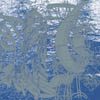 As former members of the ambient/industrial project Maeror Tri, the duo now known as Troum developed and refined their combination of booming atmospheres and subtle soundscapes. As Troum, they continue their trek into spaciousness, creating drones of sweeping drama and roar.
As former members of the ambient/industrial project Maeror Tri, the duo now known as Troum developed and refined their combination of booming atmospheres and subtle soundscapes. As Troum, they continue their trek into spaciousness, creating drones of sweeping drama and roar.
The album consists of a variety of pieces that have been attempted or performed over the past seven years, appearing here in their most finished states (as finished as the artists can ever be satisfied with, that is). Opening with "Elation," the stage is set with low end tones and higher frequency ringing, crawling along at a slow pace and enshrouded in a tangible amount of reverb. The following "Useque Sumus Lux" keeps the sub-30hz frequencies pegged out, but throwing in rhythmic loops and a wider palette of noises. The piece is a running contrast of loud synths and raw rhythms, yet gentle and delicate ambient pastiches.
Both "Eolet" and "Ecstatic Forlornness" keep the rhythms in place, though the former is more buried and primitive in nature, while the latter is much more commanding and clattering. "Ecstatic Forlornness" is based on heavy elements and a lot of flanging and filtering, but the transitions between effects are almost too direct and jarring, never allowing the piece to hit its stride. The cover of Savage Republic’s "Procession" is similar, but more old school organic in nature. The echoing production is still present, but the allowance of more traditional rhythms and noticeable, although highly obscured, vocals give it more of an early 1980s feeling rather than oblique compositions.
"Dhanu-H" and the closing "Crescere" eschew the rhythms for symphonic, sweeping elements of dramatic flair. Both could be the score to a psychological drama, though the latter’s slow build from near silence into rawer textures and musical loops might be a bit too jarring to work in that capacity. Half of the first pressing of this disc includes a bonus second CD, consisting of the 33 minute track "Abhuna," which continues the dramatic ambience. Using all of the time allotted to it, the piece builds from nothing into a slow, sparse piece of glacial drift and reversed tones, reaching a warm and inviting conclusion instead of the expected raw and dark ending moments. While the second disc isn’t as impressive as the main album tracks, it does not detract from the experience either.
This set comes packaged in the traditionally beautiful Beta Lactam way, a heavy mini-gatefold jacket adorned with designs by Stephen O’Malley that compliment the subtle, yet complex sounds contained within very well. Considering it is more of a compilation of tracks rather than an album in the traditional sense, the pieces work extremely well together to form a coherent whole.
samples:
Read More
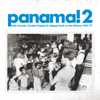 A new compilation from Soundway is always cause for excitement and this follow-up to 2006's excellent Panama! is no exception. I have no doubt that this album will finally cement Panama’s deserved reputation as the funkiest, sexiest isthmus around (tough luck, Suez!).
A new compilation from Soundway is always cause for excitement and this follow-up to 2006's excellent Panama! is no exception. I have no doubt that this album will finally cement Panama’s deserved reputation as the funkiest, sexiest isthmus around (tough luck, Suez!).
- Administrator
- Albums and Singles
 A new compilation from Soundway is always cause for excitement and this follow-up to 2006's excellent Panama! is no exception. I have no doubt that this album will finally cement Panama’s deserved reputation as the funkiest, sexiest isthmus around (tough luck, Suez!).
A new compilation from Soundway is always cause for excitement and this follow-up to 2006's excellent Panama! is no exception. I have no doubt that this album will finally cement Panama’s deserved reputation as the funkiest, sexiest isthmus around (tough luck, Suez!).
As with its predecessor, Panama!2 compiles a stylistically varied assemblage of tracks from Panama's golden age that have never been released outside the country. This was no simple task (it took compiler Roberto Ernesto Gyemant two years of research and travel), as this period was characterized by rapid evolution and eclectic assimilation of disparate influences. Due to its unique location and diverse population (owing to the enormous influx of canal workers in earlier generations), traditional Panamanian music was buffeted by influences from American soul and funk, Cuban rumba, Columbian vallenato, calypso, and a host of African, Caribbean, and Latin American styles. Unsurprisingly, this convoluted cross-pollination often yielded impressive and infectiously dance-able results.
Gyemant has assembled a very solid collection and there are a number of attention-grabbing tracks here. The opening "La Murga De Panama" (by Papi Brandao) combines smoldering latin percussion with clean, elegant guitar work and a melancholy accordian, while Sir Jabonsky's bouncy, lurching calypso piece "Juck Juck Pt. 1" betrays a strong ska/reggae influence. I especially enjoyed the sultry, latinized funk of The Duncan Brothers, who appear here twice (on "Dreams" and as the backing band for Lord Cobra's amusingly over-the-top vocals on the Motown-tinged "Love Letters"). Those cats sure know how to kick a sensous jam (and the lengthy accompanying photo-filled booklet makes it clear that they know how to rock matching powder blue suits as well.).
Of course, there are a handful of tracks here that I didn't particularly like (as I have a strong personal aversion to anything that sounds like Santana or seems especially frenetic and busy), but Panama!2 is generally an extremely enjoyable and eclectic compilation of ideal summer music. Gyemant has undeniably created a vibrant and informative document (his track descriptions are especially colorful and charming) of a time when Panama was most definitely the place to be. (There has been an unsettling recent flurry of world music compilations that seem quite intent on pointedly illustrating that I was born into a particularly dull time and place. I do not like this trend.)
samples
- Papi Brandao y Su Conjunto Aires Tablenos – "La Murga De Panama"
- Sir Jablonsky – "Juck Juck Pt. 1"
- Lord Cobra y Los Hnos. Duncan – "Love Letters"
Read More
- Administrator
- Albums and Singles
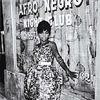 This is fifth release in Honest Jon's uniformly rewarding plunge into the EMI Hayes Archive of vintage recordings. While the previous albums have all been exotic, haunting, or unique, The World Is Shaking is the first that can be considered sensuous and fun. Here the normally disparate worlds of musicology and awesome parties unexpectedly intersect.
This is fifth release in Honest Jon's uniformly rewarding plunge into the EMI Hayes Archive of vintage recordings. While the previous albums have all been exotic, haunting, or unique, The World Is Shaking is the first that can be considered sensuous and fun. Here the normally disparate worlds of musicology and awesome parties unexpectedly intersect.
Honest Jon’s Records
The World is Shaking documents a particularly fertile, unique, and influential period in The Congo's musical evolution that ultimately birthed Congolese rumba and Soukous (which completely dominated African music for nearly two decades). The music here was shaped by three massive factors: the growing excitement of the independence/anti-colonialism movement, the new nightlife that resulted from people flocking to the cities for well-paying factory jobs, and the recent influx of imported records of latin music, American jazz, and European torch singers. The Congolese were particularly enamored with Louis Armstrong and Italian heartthrob Tino Rossi.
Needless to say, many previously traditional Congolese musicians began appropriating these new cosmopolitan sounds by whatever means they had at their disposal. This resulted in some unexpected instrumentation: the brilliantly absurd "Tika Koseka" is centered around several buzzing kazoos, while "Bino Boton, Bosele" is built upon a thumb piano motif. Naturally, the distinctly non-African guitar is rampant throughout the album (and violins and banjos are not uncommon either), but the twenty-one tracks here are invariably anchored by infectious and sexy Latin/African percussion (regardless of instrumentation).
The highlights are many, but I was most struck by the mournful opening track (Laurent Lomande's "Maboka Marie"). Notably, many of the tracks included here feature rather downcast and lovelorn vocals, but the sadness is poignant rather than tiresome due to the relentless sultry heat of the underlying rhythm. Also, even the tracks that aren't conventionally great (such as perhaps Adikwa Depala's "Yoka Ngal") radiate such awkward wide-eyed enthusiasm that it is nearly impossible to avoid being charmed.
The World Is Shaking is definitely one of the best world music compilations that will come out this year. This is raw, inspired, and vital music (dangerous too: many of the lyrics deal with sex, death, drugs, pimps, and heartbreak). Also of note, this lovingly assembled collection is augmented by notes and rare photographs from Rumba on the River author Gary Stewart. Highly recommended.
samples:
- Laurent Lomande – "Maboka Marie"
- Vincent Kuli – "Yaka Ko Tala"
- Adikwa Depala – "Yoka Ngal"
Read More
- Administrator
- Albums and Singles
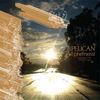 Pelican's newest release and their first for Southern Lord is a quick, three song 12" that swings gracefully through the tropes of heavy instrumental rock. Ephemeral is dusty and straightforward. It is free of noodling and epic run-on sentences and it hides a handful of riffs that give away the band's metal roots.
Pelican's newest release and their first for Southern Lord is a quick, three song 12" that swings gracefully through the tropes of heavy instrumental rock. Ephemeral is dusty and straightforward. It is free of noodling and epic run-on sentences and it hides a handful of riffs that give away the band's metal roots.
There is now an entire industry comprised of bands working metal's gloom and doom ambience without resorting to sketchy pentagrams and bloody axes on their album covers. For a long time, it was hard to find records this heavy without the trappings of metal's old scrawled-on-trapper-keeper aesthetic. There are plenty of bands still milking that too, but I'm glad that acts like Pelican can make heavy rock music without screeching vocals.
Ephemeral is perhaps little more than a prelude to a full length for Southern Lord, but it's a handy package of three great pieces that bring plenty of gutteral chug without the need for fancy pants orchestration or weepy synthesizer patches. What I love most about the record are those moments where the band slips into riff mode. The hard driving but steady rhythm that inspires simple head nodding through most of the songs gives way to full tilt devil horn pumping for mere seconds and it's in those moments that I'm glad that Pelican have not left the metal behind.
I grew up wanting to like metal because of its visceral attitude and combative disposition. I quickly found that most metal was too silly to take with a straight face, and that those bands who ground out slow, instrumental doom were perfect for shoe-gazing but not much else. Pelican sits happily inbetween—not quite beholden to the doom and drone, but not so enamored with acrobatic guitar solos as to seem trite and self-absorbed. Ephemeral features two new tracks and a cover of the Earth song "The Geometry of Murder" on which Earth songwriter Dylan Carlson sits in. I'm amped for the full length.
samples:
Read More
- Administrator
- Albums and Singles
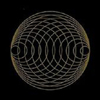 After several years of relying on a computer as his primary compositional tool, Gregg Kowalsky took a page from the mischievous intellectuals of the Oulipo and embraced voluntary artistic constraint as a means of liberating himself from the oft-crippling burden of unlimited possibility. Tape Chants is the result.
After several years of relying on a computer as his primary compositional tool, Gregg Kowalsky took a page from the mischievous intellectuals of the Oulipo and embraced voluntary artistic constraint as a means of liberating himself from the oft-crippling burden of unlimited possibility. Tape Chants is the result.
This release, Kowalsky’s second for Kranky, is actually the third release in the Tape Chants series. However, the other two were released on smaller labels and are long out of print, so this will be most people’s first exposure to Gregg’s ingenious and inspired analog vision. The premise is quite simple: Tape Chants uses tape loops as the primary source of material. When performing live, Kowalsky sets up a number of cassette players around the room (all tuned to one another and playing separate loops), then manipulates their volume to create a shifting psychoacoustic installation that each audience member hears slightly differently.
The first real track on the album, “I-IV,” begins with a two wavering drones (one high and one low) that are gradually enhanced by other swelling tones, a distant melodic shimmer, and some sort of weird crackling or scraping. It hypnotically ebbs and flows in this vein for about 20 minutes, although some heartbeat-like percussion drifts in for while. It is extremely difficult to tell which instruments most of the sounds originate from, as all of the loops blend together into a formless, quavering soup. Each piece is constructed with tuned sine waves as the foundation and they are generally the most conspicuous element. Kowalsky also employs gongs, percussion, a shruti box, feedback, and some field recordings, but they are generally used both sparingly and subtly.
All of the pieces on Tape Chants are very similar in tone. Or rather, the absence of tone, as Kowalsky seems very intent on omitting any sharp edges or melodic movement. The most notable exception to this aesthetic is the extremely brief “V,” which takes a rather foreboding tone with a slow motion gong ominously keeping time over a dark, throbbing bass drone. “IX” departs from the floating, weirdly amniotic stasis as well, as its crackling static drone is colored by some murky minor key piano chords. Generally, however, the more successful tracks are the lengthier ones (regardless of their atmosphere): Kowalsky is quite skilled at what he does, so it is easy to become enveloped when he allows a piece to stretch out. The submerged-sounding sadness of “X-XI” stands out as particularly excellent though, partially because there is more textural variation than usual.
My opinion of this album is a bit complex. On one hand, Kowalsky has made a solid, creative, and immersive drone album. The subtle interplay between the shifting, quivering loops is often quite mesmerizing (particularly when listened to at a suitably high volume). However, drone music constructed from sine waves is inherently rather faceless and exclusively cerebral. I suspect both of these issues become moot, however, when Kowalsky performs Tape Chants live (I will find out next week). While a CD may not be the perfect medium for appreciating this experiment, it makes for an engrossing listen nonetheless.
samples:
Read More
- Administrator
- Albums and Singles
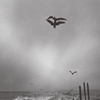 This is an aptly titled and blessed-out slab of shimmering pastoral ambiance by this Tokyo-based composer. Saunter is inspired by the unfamiliarity and heightened awareness of moving to a new home (and the philosophical underpinnings of traditional monochromatic Chinese landscape paintings, of course).
This is an aptly titled and blessed-out slab of shimmering pastoral ambiance by this Tokyo-based composer. Saunter is inspired by the unfamiliarity and heightened awareness of moving to a new home (and the philosophical underpinnings of traditional monochromatic Chinese landscape paintings, of course).Chihei has an anachronistic aversion to electronic instrumentation (although clearly not to heavy sound processing). Saunter is constructed largely from almost unrecognizable piano but there are occasional contributions from vibraphones and field recordings as well. The opening “Treads Echoing Far Away From Sea Coast” is built around what sounds like backwards, heavily reverbed piano and texturally calls to mind Harold Budd. However, Hatakeyama’s compositions are much more abstract than Budd’s: there is very little in the way of rhythm or structured chord progressions here. Each song on Saunter is essentially a melodically static, soft-focus cloud of shimmering drones and swells. They are surprisingly vibrant clouds though: clear notes continually burst forth from the quavering aural fog and demand attention like a splash of color across a black and white photograph. That said, “Treads” is a very representative microcosm, as the rest of the album falls very firmly in the same vein, Occasionally, however, other elements (such as the acoustic guitars in “A Stone Inside The Box” and the closer “Landscape On a Hill”) find their way into the mix. Generally, the album is a series of endlessly drifting, blurry, impressionist swaths of sound.
Hatakeyama has undeniably crafted an intriguing and enjoyable album and has done many unusual things with space, structure, and instrumentation. Saunter is too polite and tranquil for me, however, to take in large doses. I suspect that Hatakeyama will always be an artist that I respect, but not an artist that I actually listen to regularly (unless I somehow achieve a Zen-like calm and supernaturally heightened appreciation of nuance).
samples:
Read More
- Administrator
- Albums and Singles
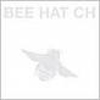 Brood is the second album born from a fruitful collaboration between Phil Western and Mark Spybey, who, until this project was hatched, hadn't worked together since their shared time in Download. Fans of that electronic supergroup will find much to enjoy with the music presented here, though it certainly isn't a rehash. Tightly sequenced psychedelia and ritualistic rhythms meet with brooding, subsurface vocals and a sound palette that ranges from far Eastern inflections to the claustrophobically industrial.
Brood is the second album born from a fruitful collaboration between Phil Western and Mark Spybey, who, until this project was hatched, hadn't worked together since their shared time in Download. Fans of that electronic supergroup will find much to enjoy with the music presented here, though it certainly isn't a rehash. Tightly sequenced psychedelia and ritualistic rhythms meet with brooding, subsurface vocals and a sound palette that ranges from far Eastern inflections to the claustrophobically industrial.
In some cases musical projects where the musicians exchange sounds through the mail or over the Internet are lacking in a feeling of immediacy; not so with Beehatch. The sense of organic development within these songs is quite palpable. These artists are so at home in the studio, their mere separation by an ocean becomes irrelevant. Connecting over the fiber optic, joined together in a union of the third mind, they forge seamless electronic soundscapes despite the physical distance separating them.
“Edison Medicine” opens the disc in a surrealistic bubble bath of inane mechanical rumbling, hiss and slurred voices that eventually give way to the bright melodic arpeggiations of “I Forgot to Mention,” a piece that ebbs, swirls, and flows like insect swarms watched from a distance. “Du Du Horn” is a short piece in which a voice says, “we dream together,” ushering us into a cyclonic fanfare of regurgitated horns, twittering drums, and partially digested voices. The overall mood of these songs is one of darkness: the kind conducive to a bad psychedelic trip. Snippets of ecstatic beats, showing hints of pop sensibility, emerge briefly here and there, only to disappear moments later, leaving an unsettled feeling of dislocation in their wake, an experience intensified when listening on headphones.
Joining forces, Mark Spybey and Phil Western have created a psychotronic world of alternately menacing and amusing surreality. This is partially due to the density of layers contained within each song, stacking sound on top of sound. A dozen or more listens on and I’m still noticing new things: subtly attenuated pieces of broken melody, the spacey oscillations of mutant synthesizers, havoc wreaked with warble and buzz, samples that might have otherwise decayed if they hadn’t been given a place to live. This is the albums strength.
samples:
Read More

